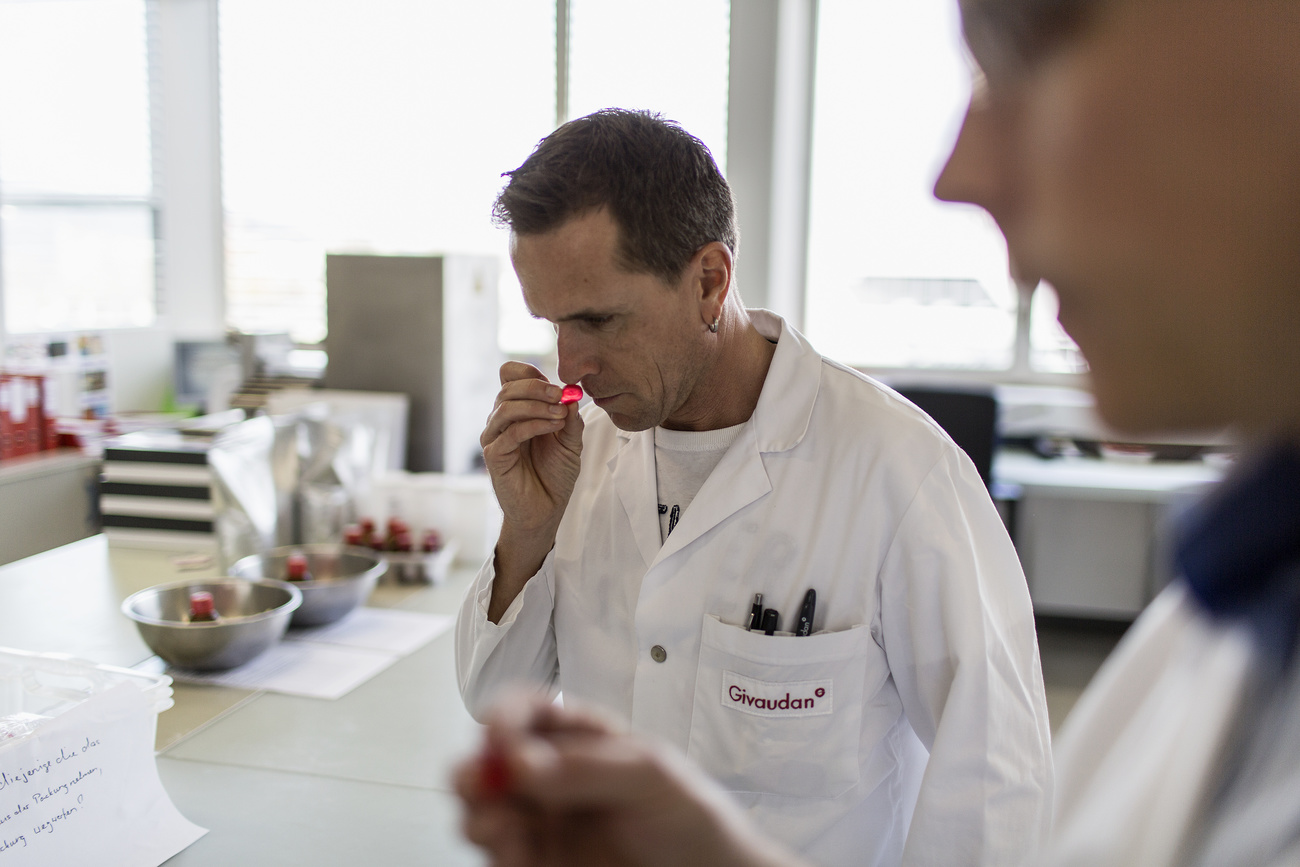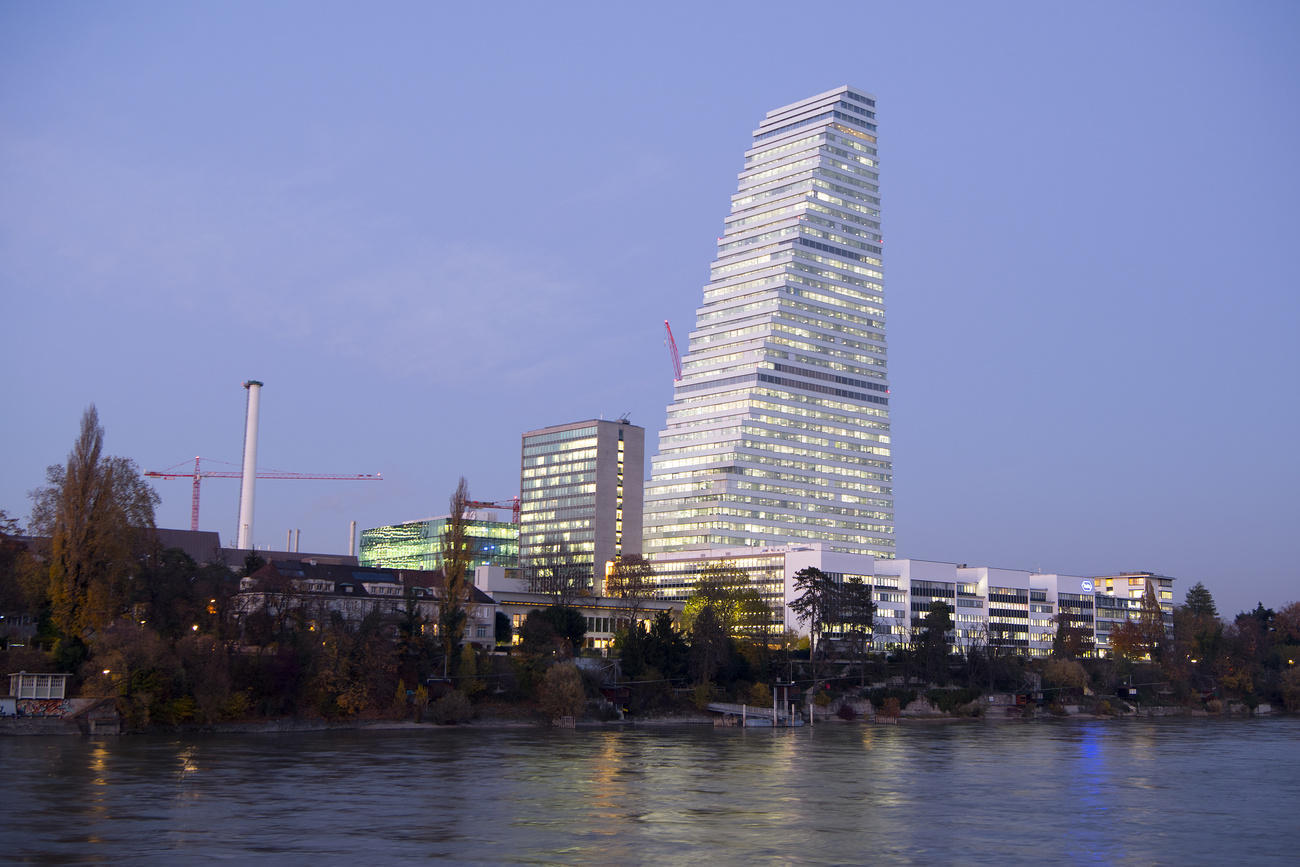
Tastemaker Givaudan savours smell of success

You may not have heard of Givaudan but you will almost certainly have eaten, worn or washed in something it has made.
The Swiss company is the world’s largest producer of fragrances and flavours. From laundry detergent to salami, from high-end perfume to meat-free burgers, Givaudan’s chemicals are involved.
Now, having enjoyed a decade-long boom in the market for its products, it is priming itself for even more spectacular growth. Chief executive Gilles Andrier told investors last month that Givaudan was geared, perhaps more than any other company, to the biggest global consumer trends: advances in food technology, sustainability, health, and globalisation.

But the Vernier-based chemicals specialist is facing growing competition. And some observers warn that its growth projections — it expects revenues to double to CHF12.5 billion by 2030 — verge on the complacent.
In December, rival IFF announced plans to merge with DuPont’s nutrition and bioscience division to create a $45 billion business to challenge Givaudan’s top spot. The deal is on track to close in the first quarter of 2021.
Meanwhile, some analysts ask whether Givaudan, whose share price has risen a quarter this year and more than doubled in the past five years, is already overvalued.
“Givaudan [is] a high-quality business with strong management but . . . we estimate it is priced for 8 percent growth a year in an industry growing 3-4 percent,” Charles Bentley of Credit Suisse noted in a recent report. It was “hard to gain comfort” that the company would continue to outpace its rivals through organic growth alone, as it forecasts, he added.
Sustaining growth
Givaudan, founded in 1895 and listed in 2000 after being spun off from Roche, has two main divisions — taste and wellness, and fragrance and beauty, whose revenues rose 4.5 percent and 7.3 percent respectively last year.
“The two long-term drivers are urbanisation and consumer spending power,” chief finance officer Tom Hallam told the Financial Times. “When people move into cities from the countryside they start to consume packaged goods, food and beverage, and what we call HPC — household and personal care goods. And they all contain either flavours or fragrances, or both.”
Mr Hallam cites the example of bar soap in India, where it is the main detergent for laundry. A decade ago it was primarily used in an unadulterated basic form but now most is fragranced using Givaudan products.
Givaudan’s presence continues up the value chain. “If you earn more money you buy a washing machine to wash your clothes, so you use washing powder,” said Mr Hallam. “And then you start to use a softener. Then a stain remover.” Givaudan chemicals are used in all of them.
“It’s the same on the food side,” he said, as consumers shift from locally grown produce to processed foods. “Typically it starts with snacks — a bag of crisps, a packet of biscuits . . . and over time as your disposable income increases, you go to the fast-food restaurant, the semi-prepared food.”
Most analysts agree the company will continue its trajectory, with 4.7 percent growth the consensus forecast for next year.
“I don’t want to be too bullish but it’s very difficult to find areas of weakness with Givaudan,” said Jean-Philippe Bertschy at Vontobel, who likens the company “to an octopus — with tentacles across all these different markets at all these different levels”.
However, it is unclear how it intends to convert impressive sales into sustained growth in underlying earnings, which have risen just 10 percent in five years, from CHF635 million in 2015 to CHF702 million in 2019.
A string of 15 acquisitions in the past five years accounts for a third of the company’s rise in revenues. While Givaudan says it is still looking for opportunities, a clear message at its investor day last month was a pivot to focus on organic growth and partnerships. The real test may be in how the business improves its bottom line.
New markets
Holding on to market share in the medium to long term, especially in maturing developing markets, may also be a challenge but the company is confident.
“We don’t tend to see competitors in emerging markets, I’m not saying that out of arrogance or complacency, they just don’t focus too much on this business,” said Mr Hallam.
Givaudan’s competitive model is built on exporting cutting-edge chemical and engineering technology developed in Europe to Asia and Latin America, allowing it to maintain a constant edge. Last year it spent CHF28 million on research into new technologies, outstripping the CHF390 million spent by Firmenich and €213 million by Symrise.
Regional rivals, of which there are only a handful, lack the financial firepower to compete with the company’s R&D spend, according to Mr Hallam. “The barriers to entry in this industry are very, very high.”
But so too are margins, which has led others to try to stake a claim to the sector.
DuPont chairman Ed Breen promised in December the combined business with IFF would have “double the R&D of any other company in the industry”.
Two technologies in particular are important for Givaudan’s growth expectations in the future.
Encapsulation, the use of tiny fragrance or flavour-laden capsules that gradually disintegrate to extend the longevity of tastes and smells, is already a big driver of profitability. Chewing gum, in particular, has been revolutionised by Givaudan’s encapsulated flavours.
The technology is also critical in artificial meats and low-sugar or low-fat foods, helping improve the texture and “mouthfeel” while improving tastiness. It works in fragrances too — these days bedsheets smell fresher for longer because Givaudan-produced perfumes in detergents continue to be released several days after the wash cycle.
Fermentation, which uses genetically modified microbes to synthesise fragrances and flavours such as vanilla, might reshape Givaudan’s supply chain, removing the raw material price fluctuations and shrinking the company’s carbon footprint.
The company hopes the process will allow it to produce, from a single location and regardless of season, a huge number of the roughly 10,000 separate raw ingredients Givaudan currently has to source from all over the world.
Resilience through the pandemic
The challenges of the first half of this year have rocked many other consumer-facing companies but Givaudan has shown its resilience with a 4 percent rise in sales.
Mr Hallam said the depth of the company’s reach gives it “natural hedges”. While not much perfume has been worn in the past six months, with sales in Givaudan’s high-end fragrances division down 16.4 per cent, revenues from consumer products including soap and sanitiser grew 11.8 percent.
In the food division, meanwhile, consumers have turned to packaged food with longer shelf lives while also beginning to experiment more with products such as vegan meals or meat substitutes, as they have more time at home to cook. Sales at Givaudan’s food division have risen 2 per cent so far this year.
The company’s quiet ubiquity is the key to its consistent returns. Whether you drink Coke or Pepsi, Givaudan provides the flavourings.
“We just want you to consume,” said Mr Hallam.
Copyright The Financial Times Limited 2020

More
Inside Roche: Taking on the tech sector

In compliance with the JTI standards
More: SWI swissinfo.ch certified by the Journalism Trust Initiative




























You can find an overview of ongoing debates with our journalists here . Please join us!
If you want to start a conversation about a topic raised in this article or want to report factual errors, email us at english@swissinfo.ch.